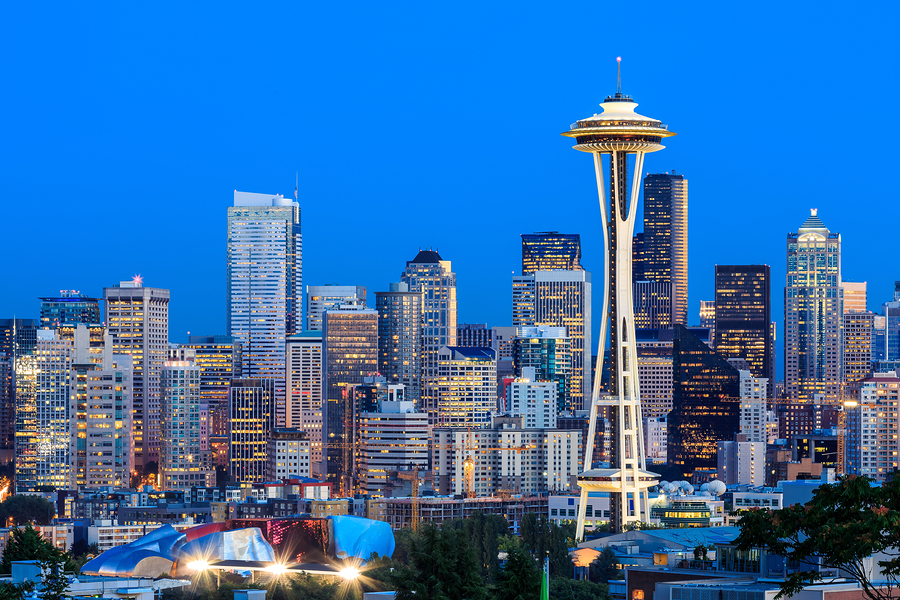Virginia Beach-Norfolk, Virginia

AFI Score: 57.5
Outdoor leisure opportunities about for the Virginia Beach-Norfolk area, which pushes it up in the rankings. In fact, it ranks in the top percentile for acres of parkland per capita, percentage of city land area as parkland, playgrounds per capita, and park-related expenses per capita. Unfortunately, the area is hindered by a greater than average number of people who smoke, have diabetes, or suffer from asthma.
San Jose, California

AFI Score: 65.9
San Jose is one of the few cities on the list that has a higher than average percentage of residents who consume three or more vegetables a day. It's easy to meet that goal with an above average number of farmers' markets available. A large number of people also bike or walk to work.
Seattle, Washington

AFI Score: 68.5
Walking, biking, or taking public transportation to and from work is common practice in Seattle, helping residents stay active. However, the city also had higher than average percentages in which respondents indicated their physical and mental health were not good for the past 30 days.
Portland, Oregon

AFI Score: 69.6
First the bad. Portland has a higher than average number of current smokers. But what the city gets right, it does so super well. Incredible walkability, high usage of bikes and public transportation, and large acres of land devoted to parks are just a quick list of pros the city can rest its laurels on. In fact, 83% of the city is within a 10-minute walk to a nearby park. Maybe Portland is allowed to indulge once in a while.
Denver, Colorado

AFI Score: 71.1
Denver, too, has a higher percentage of current smokers and, unsurprisingly, a high percentage of residents who suffer from asthma. Coincidence? It ranks highly overall for its plethora of outdoor leisure options including more playgrounds, golf courses, ballparks, and swimming pools per capita than most cities on this list.
San Francisco, California

AFI Score: 72.6
There are a higher than average number of diabetes and asthma sufferers in San Francisco, but when it comes to areas where they can get some fresh air, the city knocks it out of the park. Public park expenditures are double the national average, and 98% of residents are within a 10-minute walk to a park. The city's walkability score is also the second highest of any city on the list.
Minneapolis, Minnesota

AFI Score: 75.6
Minnesota lags behind other states in promoting active lifestyles to children in schools, but Minneapolis exceeds expectations in almost every other measured indicator. The city spends twice the average amount on parks, which you can see by it's having three times the number of ballparks and twice the number of recreational areas as other cities in the country.
Washington, D.C.

AFI Score: 79.6
Washington gets dings for sheer numbers of acres devoted to parkland, but you can't really help it when you're that small. With what parkland it does have, D.C. spends three times the national average. Clearly their green space is important to them. The nation's capital also has lower rates of cardiovascular and coronary heart disease, as well as a lower than average number of people suffering from diabetes.
 Author
Rachel Downs
Last Updated: December 01, 2025
Author
Rachel Downs
Last Updated: December 01, 2025